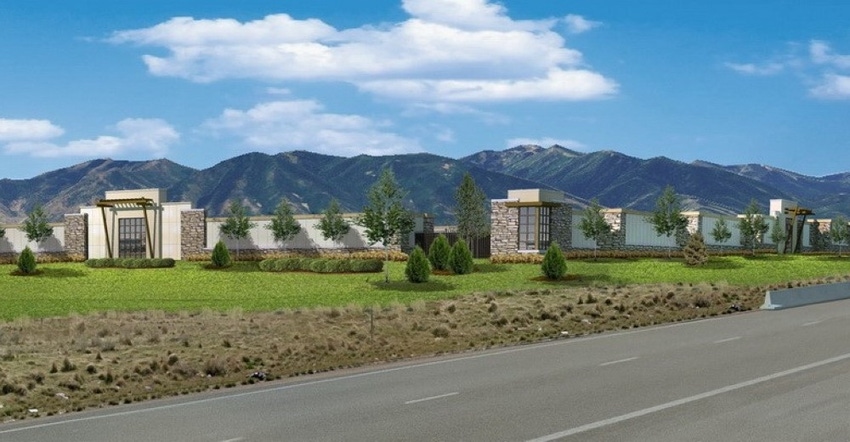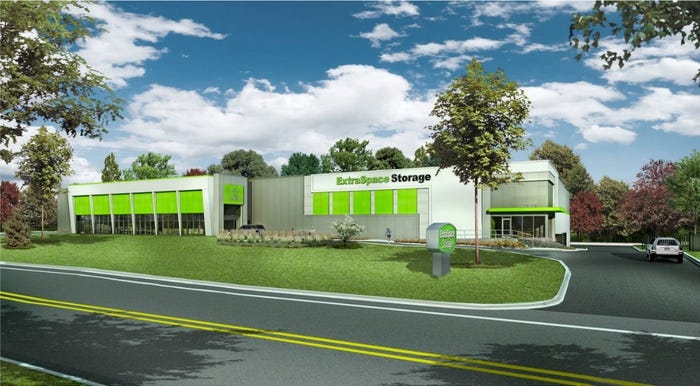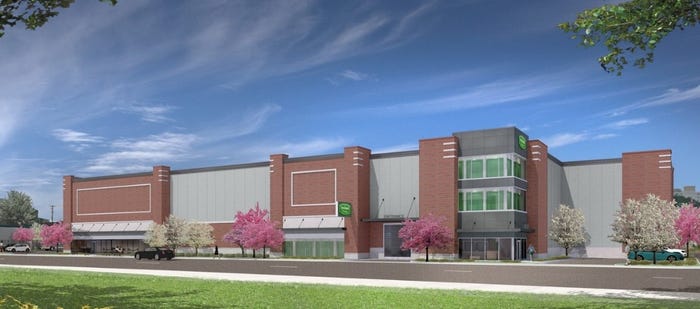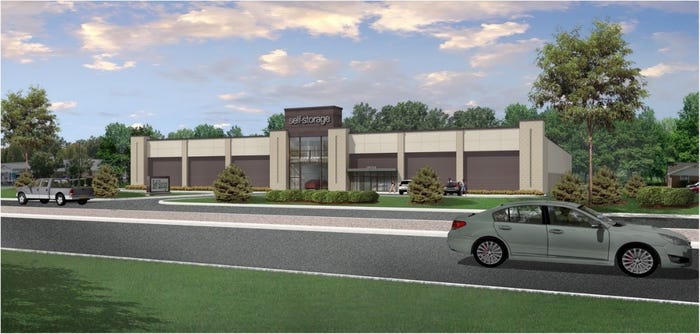Today more than ever, self-storage facility design is impacted by the perceptions and expectations of jurisdictions and community members. See how the industry is responding in 2020 with building trends emphasizing cleanliness, subtlety and sophistication.

Self-storage facility design continues to be shaped, as it always has been, by two opposing forces: the need of a developer to attract business and the desire of a community to resist change.
From a developer’s perspective, self-storage needs to expand into wider markets and be located for customer convenience. He also needs people to recognize the facility for what it is and feel comfortable doing business there. From the community’s perspective, while there’s a yearning to increase tax revenue, change can be difficult and spur conflict. Some people don’t want to see the look and feel of their neighborhood alter, and any new development can prompt fear. Some welcome it, others resist.
Municipal planners are sometimes caught between residents and developers, causing them to impose conditions on projects that appease residents while still allowing development to occur. It’s these increased demands that force architects to come up with innovative approaches to self-storage design.
Fighting Public Perception
Developers still battle preconceived notions of what self-storage is and looks like. Our reputation precedes us. Right or wrong, people have an image of the product that’s been generated by earlier iterations of design. The earliest facilities were metal sheds behind gas stations, and this impression still lingers in people's minds.
As self-storage created a foothold in the marketplace, it often captured attention with vibrant, flashy colors. To convey the idea of security, buildings were festooned with images of keys, locks, safes, etc. And no element says “self-storage” more than a row of roll-up doors, whether they be outside a building or behind glass. Sometimes these projects were designed with finesse, but often the results were clumsy and tacky. So, again, some people are opposed to new storage projects before they even see the proposed design.
National operators use architectural elements, details and colors that promote and unify their brand. Some communities are resistant to these designs, as they seem too much like fast-food franchises. Residents want buildings that respond to local needs, tailored to a specific site. Buildings today also have less of a need to be spotted from miles away, thanks to online searches for “self-storage near me.”

Making the Transition
Self-storage has largely moved out of industrial areas into commercial ones, and it continues to expand into places previously reserved for retail and residential. In all kinds of areas, it fills a need. But when storage is introduced into a residential area, the community will likely want it to blend into its surroundings.
A self-storage facility isn’t likely to be allowed into a single-family residential area, but there are zones at the edges of these districts where multi-family projects are allowed to ease the transition to dense urban centers. In some cases, commercial developments are permitted. So, while a traditional self-storage project would face difficulties in getting approved, one that, at first glance, could be mistaken for a multi-family condominium would have an easier time.

Crisping It Up
Self-storage architects today are using building design to overcome obstacles imposed by local use restrictions and preconceptions. By making structures compatible with their surroundings, they drastically minimize the chance that appearance will be a detriment to project approval. Still, as customers and the market become more amenable to self-storage, designs have needed to become more sophisticated.
Modern design is now the go-to style for many new projects. With crisp lines and clean surfaces, this design style conveys neatness and freshness. Instead of actual rows of storage doors, doors are abstracted into basic shapes. At first glance, this approach still broadcasts what the facility is without violating local restrictions.
The color palettes for new facilities have moved away from bright, attention-getting colors. Taking cues from current retail and restaurant designs, self-storage projects now incorporate warmer colors, natural materials and higher-end metal panels.
In business corridors where office buildings line both sides of the street, self-storage can match the look of low-rise offices. Again, the industry’s common building elements can be displayed in a more subtle way. For example, oversized vertical elements with two-story recessed areas look, from a distance, like oversized storage doors.

Rising to the Occasion
Often, the only zoning that allows for self-storage is industrial, which might be on the outskirts of town. Though far from the city center, when on a major roadway, these locations are sometimes the first things visitors see when they enter an area. As a “community gateway,” self-storage buildings in these circumstances require high-quality design. Top-of-the-line materials, commercial storefront windows, dramatic nighttime lighting and custom details are all used, even while blocking views to storage doors.
Modern design isn’t universally accepted, however. When a community has a favored architectural style or distinctly traditional look, a sleek approach would stick out like a sore thumb. A good strategy when building adjacent to residential communities is to adopt that local style. Since the buildings don’t stand out, developers have fewer hurdles to overcome.

When developing in older neighborhoods filled with historic structures, again, newer designs would be out of place. Self-storage projects may be required to use materials that are in-keeping with the neighborhood, such as limestone and masonry, and to match building existing building heights and setbacks.
Self-storage design continues to evolve, and each site faces its own set of constraints. In response, projects will continue to adapt with a variety of architectural options and an overall more refined look. Gone are the days of cookie-cutter buildings. This is a new generation of storage!
David Wytmar is president of Groundwork Ltd., a Chicago-based architectural, planning and engineering firm that’s served the self-storage industry for 25 years. He’s a licensed architect and building-science practitioner with LEED (Leadership in Energy and Environmental Design) accreditation. He has expertise in architectural design, production and coordination, from feasibility study through contract administration. For more information, visit www.selfstoragearchitects.com.
About the Author(s)
You May Also Like





